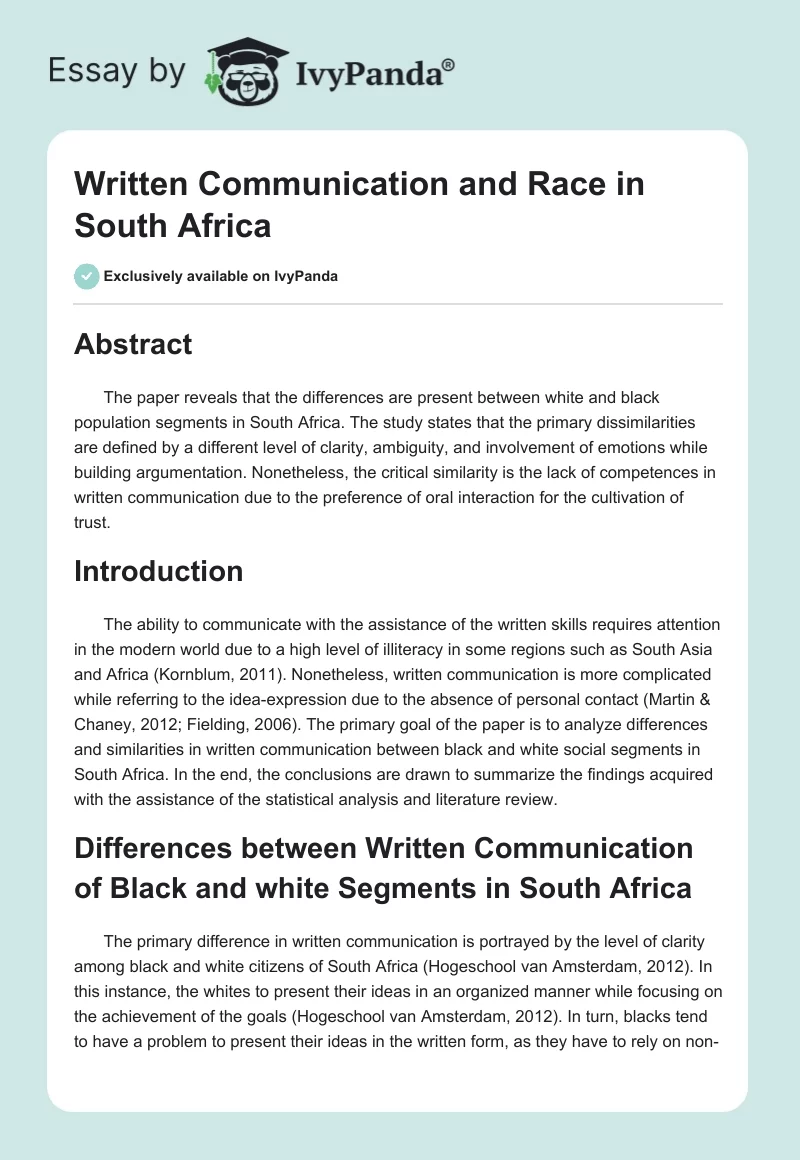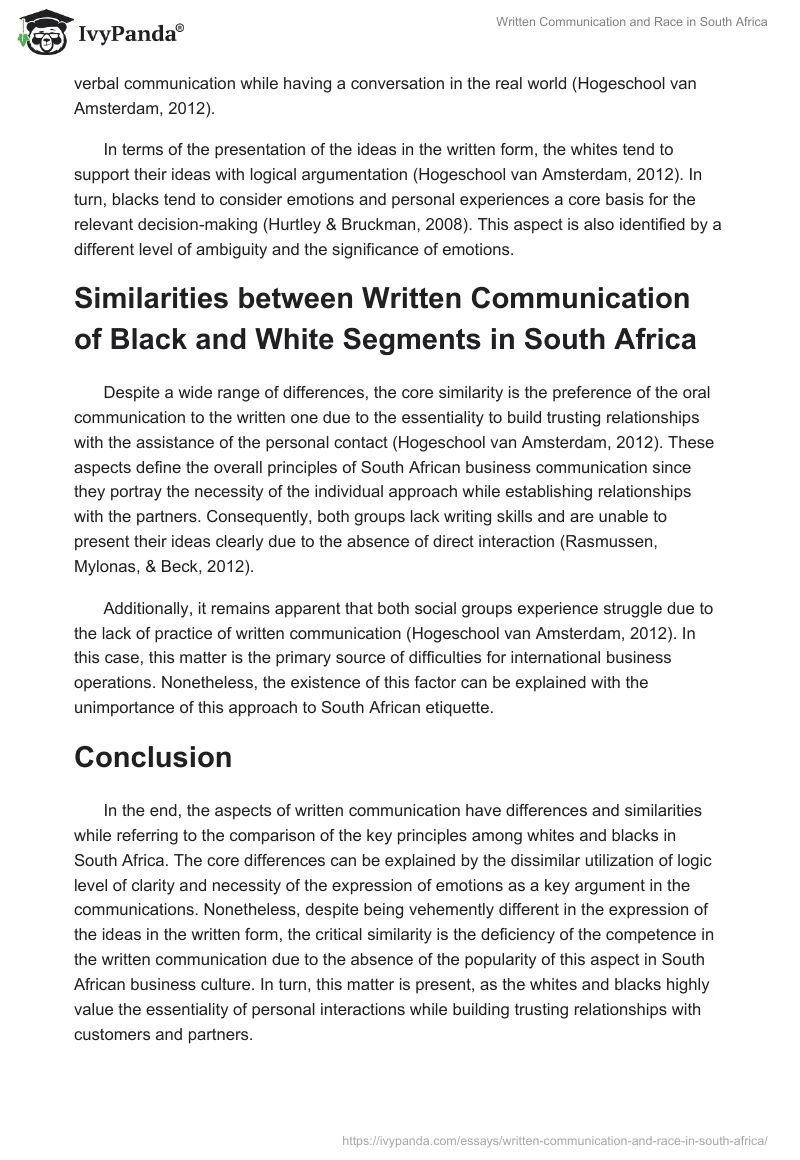Abstract
The paper reveals that the differences are present between white and black population segments in South Africa. The study states that the primary dissimilarities are defined by a different level of clarity, ambiguity, and involvement of emotions while building argumentation. Nonetheless, the critical similarity is the lack of competences in written communication due to the preference of oral interaction for the cultivation of trust.
Introduction
The ability to communicate with the assistance of the written skills requires attention in the modern world due to a high level of illiteracy in some regions such as South Asia and Africa (Kornblum, 2011). Nonetheless, written communication is more complicated while referring to the idea-expression due to the absence of personal contact (Martin & Chaney, 2012; Fielding, 2006). The primary goal of the paper is to analyze differences and similarities in written communication between black and white social segments in South Africa. In the end, the conclusions are drawn to summarize the findings acquired with the assistance of the statistical analysis and literature review.
Differences between Written Communication of Black and white Segments in South Africa
The primary difference in written communication is portrayed by the level of clarity among black and white citizens of South Africa (Hogeschool van Amsterdam, 2012). In this instance, the whites to present their ideas in an organized manner while focusing on the achievement of the goals (Hogeschool van Amsterdam, 2012). In turn, blacks tend to have a problem to present their ideas in the written form, as they have to rely on non-verbal communication while having a conversation in the real world (Hogeschool van Amsterdam, 2012).
In terms of the presentation of the ideas in the written form, the whites tend to support their ideas with logical argumentation (Hogeschool van Amsterdam, 2012). In turn, blacks tend to consider emotions and personal experiences a core basis for the relevant decision-making (Hurtley & Bruckman, 2008). This aspect is also identified by a different level of ambiguity and the significance of emotions.
Similarities between Written Communication of Black and White Segments in South Africa
Despite a wide range of differences, the core similarity is the preference of the oral communication to the written one due to the essentiality to build trusting relationships with the assistance of the personal contact (Hogeschool van Amsterdam, 2012). These aspects define the overall principles of South African business communication since they portray the necessity of the individual approach while establishing relationships with the partners. Consequently, both groups lack writing skills and are unable to present their ideas clearly due to the absence of direct interaction (Rasmussen, Mylonas, & Beck, 2012).
Additionally, it remains apparent that both social groups experience struggle due to the lack of practice of written communication (Hogeschool van Amsterdam, 2012). In this case, this matter is the primary source of difficulties for international business operations. Nonetheless, the existence of this factor can be explained with the unimportance of this approach to South African etiquette.
Conclusion
In the end, the aspects of written communication have differences and similarities while referring to the comparison of the key principles among whites and blacks in South Africa. The core differences can be explained by the dissimilar utilization of logic level of clarity and necessity of the expression of emotions as a key argument in the communications. Nonetheless, despite being vehemently different in the expression of the ideas in the written form, the critical similarity is the deficiency of the competence in the written communication due to the absence of the popularity of this aspect in South African business culture. In turn, this matter is present, as the whites and blacks highly value the essentiality of personal interactions while building trusting relationships with customers and partners.
References
Fielding, M. (2006). Effective communication in organizations: Preparing messages that communicate. Lansdowne, Cape Town: Juta & Co. Ltd. Web.
Hogeschool van Amsterdam. (2012). Where cultures meet: A cross-cultural comparison of business meeting styles. Amsterdam, Netherlands: Hogeschool van Amsterdam. Web.
Hurtley, P., & Bruckman, C. (2008). Business communication. London, UK: Routledge. Web.
Kornblum, W. (2011). Sociology in a changing world. Belmont, CA: Wadsworth Cengage Learning. Web.
Martin, J., & Chaney, L. (2012). Global business etiquette: A guide to international communication and customs. Santa Barbara, CA: Praeger. Web.
Rasmussen, R., Mylonas, A., & Beck, H. (2012). Investigating business communication and technologies. Cambridge, UK: Cambridge University Press. Web.


